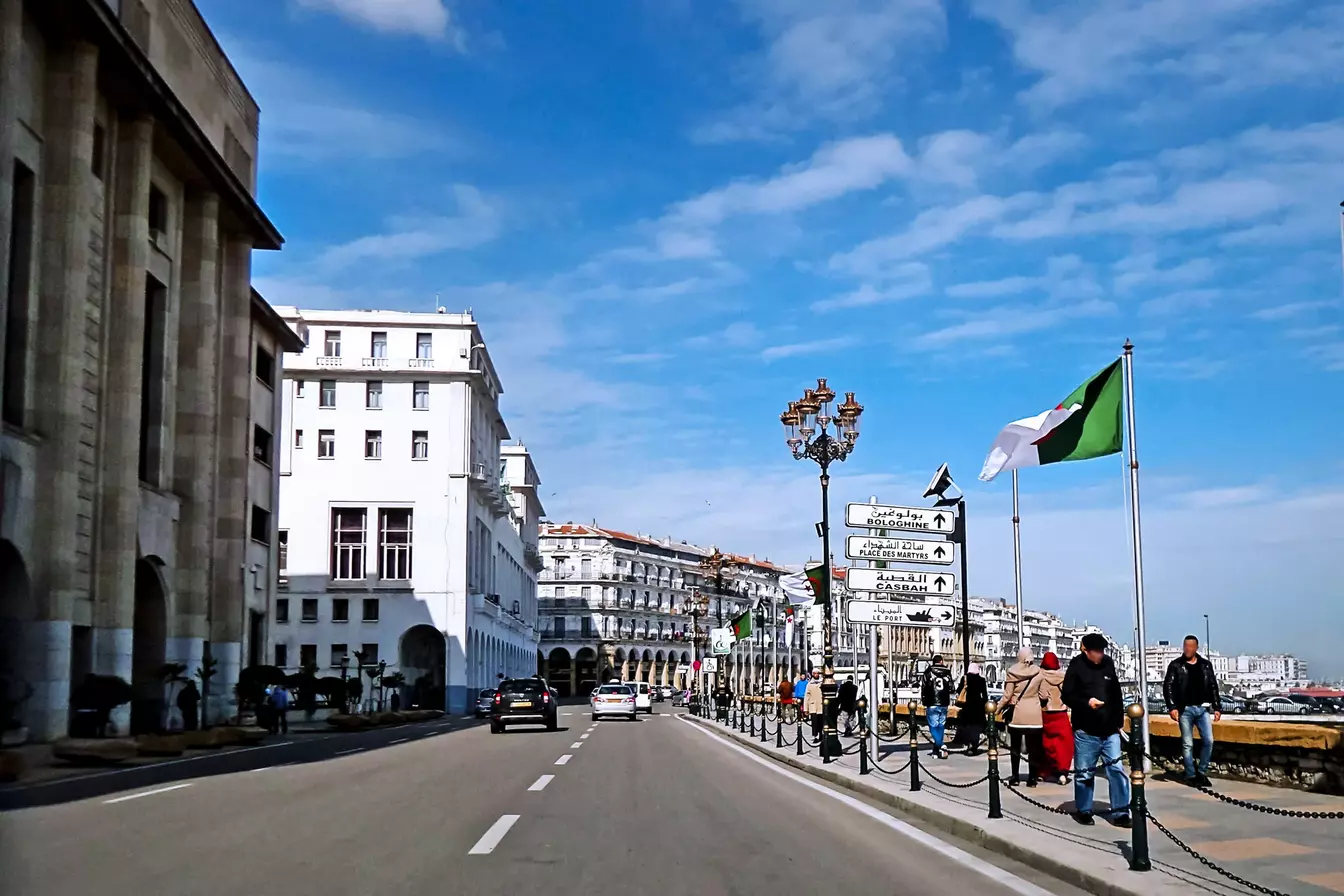
Boulevard Zighout Youcef
Overall Rating: ⭐⭐⭐⭐☆ (4/5)
Rating Breakdown:
✔ Historical Significance – ⭐⭐⭐⭐⭐ (5/5)
✔ Architectural Beauty – ⭐⭐⭐⭐⭐ (5/5)
✔ Accessibility – ⭐⭐⭐☆☆ (3/5)
✔ Tourist-Friendly – ⭐⭐⭐☆☆ (3/5)
✔ Maintenance & Preservation – ⭐⭐⭐⭐☆ (4/5)
Weather
- Algiers experiences a Mediterranean climate characterized by hot, dry summers and mild, wet winters, making it suitable for visits throughout the year.
Tags
- Historical Landmark, French Colonial Architecture, Waterfront, Cultural Heritage
Timings
Time Required
- A leisurely walk along the boulevard and exploration of its landmarks typically requires 1 to 2 hours.
Entry Fee
- No entry fee
Things to See & Do
- Architectural Appreciation: Admire the Haussmann-style buildings with distinctive arcades lining the boulevard.
- Historical Landmarks: Visit significant buildings such as the Palace of the Council of the Nation and the People's National Assembly.Scenic Views: Enjoy panoramic views of the Algiers waterfront and harbor.
- Cultural Exploration: Explore local galleries and exhibitions that occasionally take place under the iconic arches.
Best Time to Visit
- Late afternoon to early evening offers pleasant temperatures and the opportunity to witness a beautiful sunset over the harbor.
Nearest Parking Spots
- Limited street parking is available along adjacent roads. Utilizing public transportation or walking from nearby areas is recommended due to traffic congestion.
Overview
- Boulevard Zighoud Youcef, formerly known as Boulevard Carnot, is a prominent waterfront boulevard in Algiers, stretching approximately 950 meters. Constructed between 1860 and 1866 by Frédéric Chassériau, it stands about 10 meters above the port, offering elevated views of the Mediterranean Sea. The boulevard is renowned for its Haussmannian architecture, characterized by elegant arcades and colonial-era buildings.
- Palace of the Council of the Nation: Located at No. 7, this building houses the upper house of the Algerian Parliament.
- People's National Assembly: Situated at No. 18, serving as the meeting place for Algeria's lower house of Parliament.
- Hôtel Safir: A historic hotel offering insights into the city's colonial past.
- The boulevard showcases French colonial architecture with Haussmannian influences, featuring uniform facades, decorative arcades, and wrought-iron balconies. These elements contribute to its aesthetic appeal and historical value.
- Photography: The architectural details and harbor views provide excellent photo opportunities.
- Walking Tour: Wear comfortable shoes to fully enjoy a stroll along the boulevard.
- Local Events: Check for cultural events or exhibitions that may be hosted in the area during your visit.